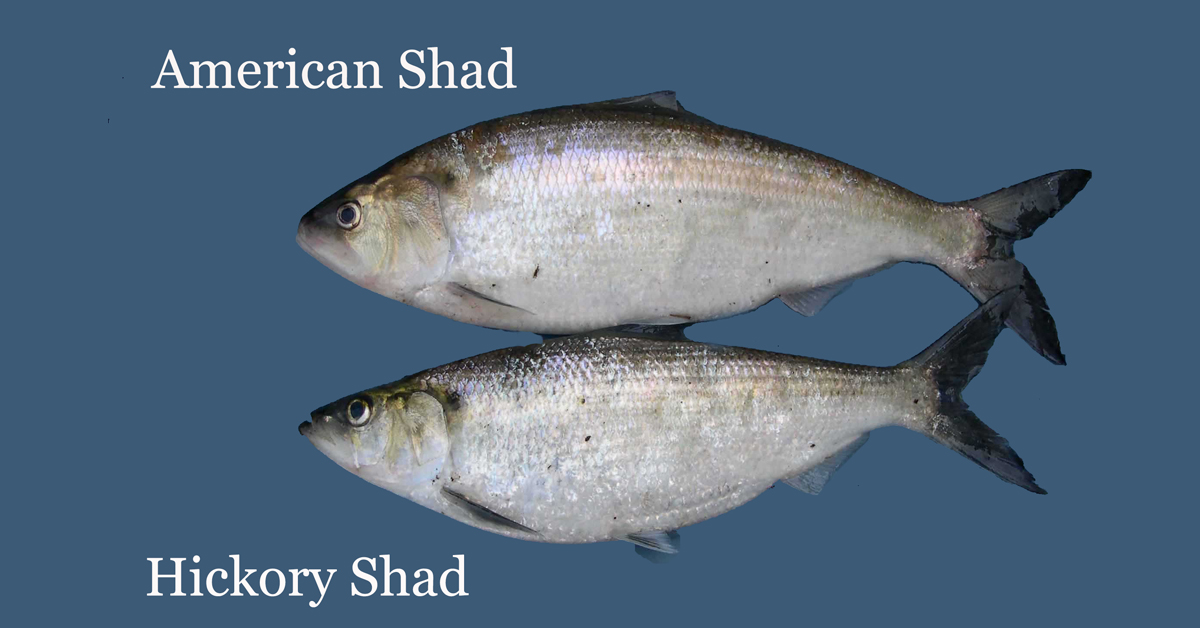Plankton eaters, the American shad is the biggest of the herring species and averages 3 to 5 pounds. They are silver on the sides, and green to blue on top, with green shading on their fins. Ideal Water Conditions for Shad
Ideal water conditions for shad include:
- Temperature: 10°C to 25°C
- Dissolved Oxygen: above 5 mg/L
- pH: 6.5 to 8.5
- Water Flow: moderate to swift
- Habitat Structure: Diverse
- Nutrient Levels: balanced
- Turbidity: Moderate
- Water Clarity: clear
Like other anadromous fish species, they spend most of their lives at sea and return to freshwater to spawn. Females release free-floating eggs that will be fertilized by later-arriving males, called buck shad, in a spawning frenzy. Eggs hatch in eight days and fry spend four to five years in salt water before returning to spawn. Shad often survives to spawn twice or more.
Introduction:

Shad is a group of fish species belonging to the family Clupeidae, which includes various species such as American shad, hickory shad, and gizzard shad. They are characterized by their streamlined bodies, silvery scales, and forked tails.
Shad are anadromous fish, meaning they migrate from the ocean to freshwater rivers and streams to spawn. They play a crucial ecological role as both prey and predator in aquatic ecosystems, contributing to the food web dynamics and nutrient cycling.
In the north of the US, April–June is when shad spawns in the coastal rivers and estuaries once water temperatures have reached 58 °F. Fishing conditions typically improve as water temperatures warm and flow decreases
Maintaining suitable water conditions is essential for the survival and reproduction of shad populations. Optimal water quality parameters such as temperature, dissolved oxygen levels, pH, water flow, and habitat structure significantly influence the distribution, behavior, and overall health of shad.
Fluctuations or degradation in these water conditions can disrupt important life stages of shad, including spawning, larval development, and migration, ultimately impacting their population abundance and ecological functions within freshwater ecosystems. Therefore, understanding and managing water conditions is paramount for ensuring the persistence and vitality of shad populations.
Two types of shad commonly found in North America are the American shad (Alosa sapidissima) and the Hickory shad (Alosa mediocris).
- American shad are anadromous fish, migrating from the ocean to freshwater rivers to spawn, and are prized for their culinary value and recreational fishing opportunities.
- Hickory shad are smaller in size compared to American shad and exhibit similar migratory behaviors, though they are often less abundant and have a more restricted range along the Atlantic coast.
Ideal Water Conditions for Shad
The ideal water conditions for shad encompass a delicate balance of temperature, dissolved oxygen levels, pH, water flow, and habitat structure. Shad thrive in waters with temperatures typically ranging from 10°C to 25°C (50°F to 77°F), ensuring optimal metabolic function and spawning success. Adequate dissolved oxygen concentrations above 5 mg/L are essential to support respiratory needs and avoid hypoxic conditions. Maintaining neutral to slightly alkaline pH levels between 6.5 to 8.5 promotes shad health and survival, while moderate to swift water flow rates and diverse habitat structures provide essential shelter, spawning grounds, and foraging opportunities for shad populations.
Ideal Water Conditions for Shad:
- Temperature within the range of 10°C to 25°C (50°F to 77°F) for optimal metabolic function and spawning success.
- Dissolved oxygen concentrations above 5 mg/L to support respiratory needs and avoid hypoxic conditions.
- pH levels maintained between 6.5 to 8.5 to promote shad health and survival.
- Moderate to swift water flow rates to provide suitable conditions for feeding, spawning, and migration.
- Diverse habitat structures, including riffles, runs, pools, woody debris, and submerged vegetation, offer essential shelter, spawning grounds, and foraging opportunities for shad populations.
Ideal Water Temperature for Shad
The ideal water conditions for shad encompass a delicate balance of temperature, dissolved oxygen levels, pH, water flow, and habitat structure. Shad thrive in waters with temperatures typically ranging from 10°C to 25°C (50°F to 77°F), ensuring optimal metabolic function and spawning success.
Adequate dissolved oxygen concentrations above 5 mg/L are essential to support respiratory needs and avoid hypoxic conditions. Maintaining neutral to slightly alkaline pH levels between 6.5 to 8.5 promotes shad health and survival, while moderate to swift water flow rates and diverse habitat structures provide essential shelter, spawning grounds, and foraging opportunities for shad populations.
References:
EPA- American and Hickory Shad

FAQ’s
What do shad eat?
Shad are primarily planktivorous, feeding on small zooplankton, including copepods, cladocerans, and rotifers. They use their gill rakers to filter tiny organisms from the water column as they swim, making plankton the main component of their diet.
Are shad edible?
Yes, shad are considered edible and are often sought after for their culinary value. They have firm, flavorful flesh and are commonly prepared by grilling, smoking, baking, or frying.
What is the best time of year to fish for Shad?
The best time of year to fish for Shad typically varies depending on the species and location. In general, shad fishing season often coincides with their spawning migration, which occurs during the spring months in many regions.



